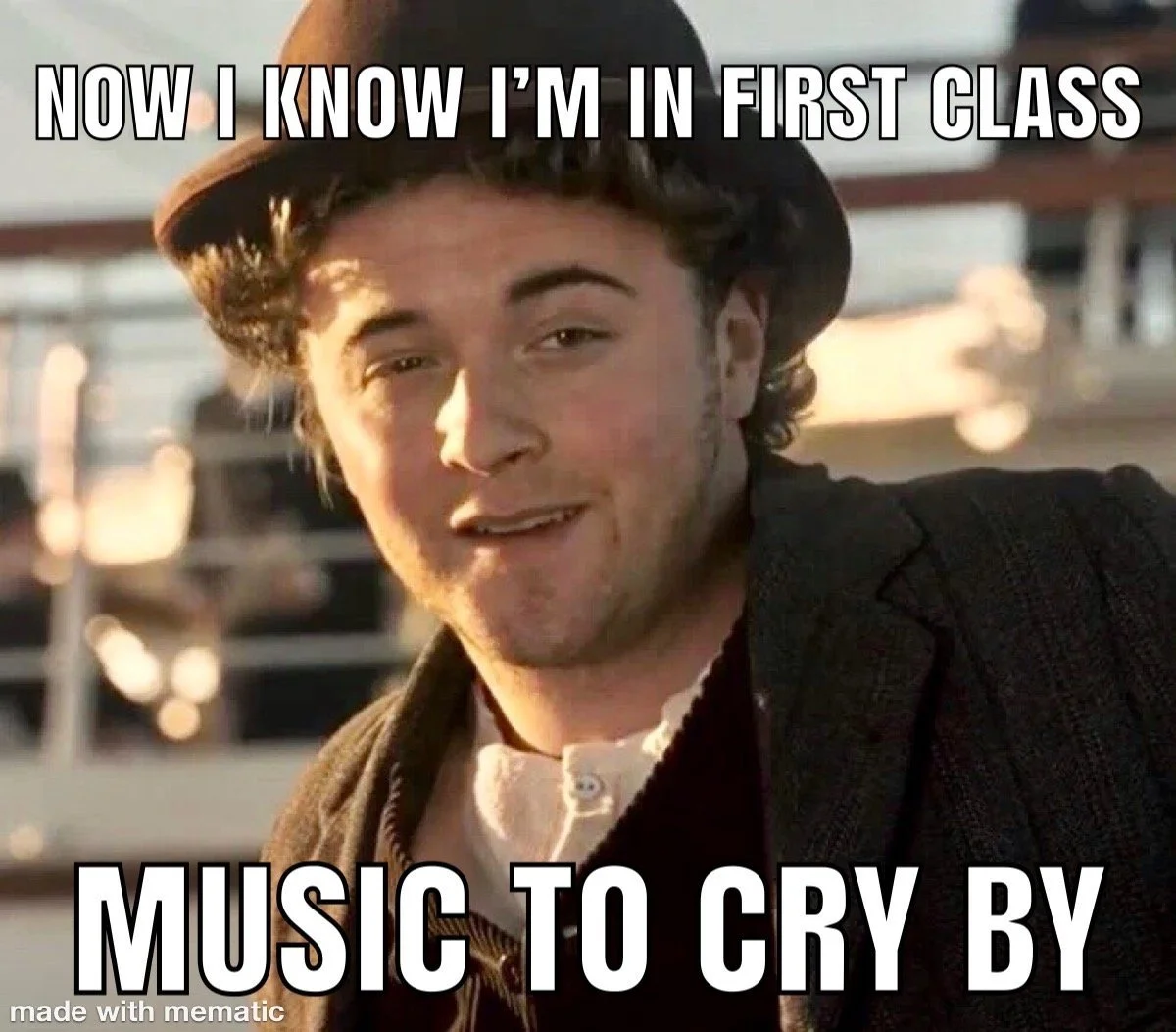The Stiff Section of Your Bible
“The stiff section”—that’s what my professor called the Prophets of the Old Testament. It’s the part of the Bible so rarely perused, whether in private or over pulpits, that it stays as stiff as the day it was printed and plastic-wrapped. But who are we kidding? It ain’t just the Prophets. Much of the OT, I’ve discovered, stays plastic-stiff and unread by otherwise devoted Christians sitting in church every Sunday, who prefer to leave the Scripture reading to the pastor. For a people meant to be founded on the Word of God, the Bible often sits on the shelf like it has a warning label: “Do not handle—professionals only.” After a deep dive into the Hebrew Bible (the OT) this year, I agree that parts of it can seem opaque without a little help. But I can also affirm that once you learn the literary and historical context, a richness unfolds in these ancient pages that illuminates the Gospels and all of modern life. The Old Testament is the bestament! So come with me, and let’s crack open that plastic wrap.
My seminary coursework concluded with two classes in the Prophets and Psalms. The professor, who taught both, started each class with a quote from C.S. Lewis: “The first qualification for judging any piece of workmanship, from a corkscrew to a cathedral, is to know what it is—what it was intended to do and how it is meant to be used.” [1] The problem, he pressed, is that readers of the OT don’t immediately recognize the various literary forms being used and the original purpose of each book—what is all this Scripture for? If you’ve ever kicked off a New Year’s Resolution to read the Bible straight through like a beach read, you have likely hit this pickle. The narrative explodes with energy enough—Creation, Noah’s Ark, Abraham, Egypt—when suddenly the popcorn-grabbing drama of the plagues and parting of the Red Sea takes a hard left turn into tedious instructions for building the tabernacle. Next, Leviticus lists such a litany of strange and snaggy laws, you quit thinking story and start wondering if you should get circumcised and quit eating shellfish. By the time you slog through Numbers’ compulsive catalog of genealogies and, um, numbers, it’s pretty much Game Over. The Bible slams shut, the screens turn on, and we let TikTok and AI Jesus tell us about the Bible without ever engaging with the text ourselves.[2] (Side note: I’ll wager twenty badollars this AI Jesus conveniently dodges the thornier claims and “hard sayings” of the OG Jesus. Side side note: Please don’t feed the AI Jesus, it will only encourage him.)
Understandable frustration, but a hazard to our faith. As Christians, we have to know the Word for ourselves. The good news is, the Good News comes alive with a bit of context! In class, we learned to identify the literary genre[3] of a book or section, and how it was intended to be received and used by the original audience. It also helps to keep the wider framework of the Biblical Story in view—God’s mission to invade the sinful world of man and bring his salvation to the ends of the earth. The Story covers a few thousand years and focuses on a particular people for a good chunk of it. Israel, God’s chosen nation, received and recorded the commands the LORD gave to them, as well as genealogies, histories, poems and psalms, and wisdom writings, all of which were eventually compiled into the Hebrew Bible. There is a unity to the whole, but each part fills a different purpose, and it helps to know where you’re at in the history. The Bible’s many stories and records present a rich portrait of God’s relationship with his people—later expanded to include the testimony and writings of the church after Jesus.
You could view the whole collection like the archive room of a city library, or more intimately, like a generational family scrapbook. Between the dusty covers, you might find old portraits, marriage and birth certificates, a family tree, a deed to a first home, old-fashioned receipts in florid script for land or livestock purchased on a forebear’s farm, yellowed love letters from Grandpa to Grandma, newspaper clippings of family events, maybe a treasured recipe. Different types of records, but one ongoing history; and to read it well, you have to know what you’re looking at, and the part it plays in the story. A newspaper article is not a legal document; a telegram cannot be a biography. A cherished recipe is not a love poem (unless you’re a foodie like me, and then those lines can get blurry).
To use the metaphor loosely, the Bible can be seen as the sacred scrapbook, or the inspired collection, of God’s covenant and commands written down by his people and worked out in real-time history, for the purpose of his greater mission to redeem the whole world. As we thumb through its pages, however, we see that not every ancient record or context leaps off the page to the modern man. There are literary conventions and cultural assumptions of that long-ago era that Israel would have caught with no effort, but that we can miss completely without a heads up. This is why study Bibles are so helpful to our discipleship; scholars and archaeologists have worked to unearth the ancient world and its literature, religion, and culture. Some of my favorite discoveries have been the use of covenants and treaties between a king and his vassals (the format of the Mosaic covenant); or understanding the use of idols and images in ancient religious worship; or the fact that ritual purity was already a central component of most Mesopotamian religions, making the “clean and unclean” laws of Leviticus seem a lot less arcane and arbitrary. As God shepherded his people out of pagan polytheism, he used the current culture to teach Israel his timeless truths. Without compromising his character or commands, he accommodated himself to their world; in other words, he spoke their language. Three thousand years later, it’s okay to need help deciphering some of that ancient conversation.
Thus, after learning their historical context and role in the Story, the “stiff section” of the Prophets loosened up a bit. Don’t get me wrong, these guys are still weird—weird visions, weird roleplays, weird predictions—but the prophets can be surprisingly down to earth, even with their heads in heaven. These were regular Joes (or Jeremiahs), called by God (often reluctantly) to a thankless task that courted severe resistance, if not death. Their primary job, in fact, was not to sit in a trance and foretell the future, but to bring an urgent warning to a wayward people: the prophets, as we learned, were covenant enforcers. Remember, Israel had been graciously rescued from Egyptian slavery and brought into a covenant relationship with her King. As God’s chosen people, she carried a weighty privilege and responsibility. God promised to root the people in the Promised Land, to protect them and provide for their needs; their part of the covenant was to worship God exclusively and obey him faithfully. His commands were not burdensome, but a training in embodying the LORD’s own justice and righteousness in their national life, extending loving-kindness down to the poor, the powerless, and the least of these. In so doing, Israel would become a beacon and a blessing to the godless nations around them.
This is why Israel’s continual rejection of the covenant was such a calamity, and incited such searing invective from the prophets. Her mission to shine God’s truth to the nations was jeopardized by her craving for power and prestige, as she became as cruel and corrupt as her pagan neighbors. Worse, Israel made the classic pagan mistake: she assumed that as long as the sacrifices and rituals were being kept up (and the “gods” were appeased), she could call “Safe!” at the Temple doors and go on doing exactly as she pleased. God bluntly confronts this religious fantasy through the prophet Isaiah:
“‘Why have we fasted,’ [the people] say, ‘and you have not seen it?
Why have we humbled ourselves, and you have not noticed?’
Yet on the day of fasting, you do as you please and exploit all your workers.
Your fasting ends in quarreling and strife,
and in striking each other with wicked fists.
You cannot fast as you do today and expect your voice to be heard on high.” (Isa 58:3-4)
God truly is the same “yesterday, today, and forever.” (Heb 13:8) He still doesn’t want lip service from his people; he’s looking for transformed lives. The church today may be released from some of the ceremonial and civic laws of the OT, but the moral charge for God’s people remains the same—his people must be known by his holiness and character, to walk the walk and just not talk the talk. To be called by God’s name and be as greedy and grasping as the godless world is still a gross absurdity, like being salt that is no longer salty. (Mk 9:50) God has always sought to shape a people to show his ways to a dying world. The Story has not changed.
The Psalms, in contrast to the Prophets, are a generally more approachable array of poetry and praise; yet these heartfelt poems held just as vital a role in the formation of the covenant people. I was surprised to learn that the Psalms were written to be sung, for use in corporate worship, not just private meditation. They were essentially the hymnbook of Israel. (Fun fact—“Hallelu-jah” is actually a corporate command: “Y’all praise God!”) As the Psalms and other Wisdom Literature attest, even our emotions must be discipled; God’s covenant people don’t spring from the womb feeling the right way about the right things! Singing the psalms was instrumental in their spiritual formation, molding the hearts of the people as they sang the truth about God. Then as now, the growth of the community as a whole, not only individuals, was important to God; and through the hymnbook of Psalms, he fashioned them into a people who were learning to love and to do the right thing toward God and neighbor. How do you get from Micah’s prophetic charge—to “act justly and to love mercy, and to walk humbly with your God” (6:6-8)—to being a people that walk that out in daily life? You get there, in part, by singing about it together![4]
More important, the Psalms do not revolve exclusively around victory chants or shouts of praise; the bulk of them, believe it or not, are laments. When is the last time you sang a doleful lament in your church service?! I am heartened to find that in the first and greatest songbook given to the faithful, victory shouts take a backseat to suffering: God gave us a whole emo section of songs to sob to. Not only does he grant the reality of suffering, but the liturgy itself becomes a vehicle for voicing that pain and supporting each other in the storms. Say Joe is suffering a personal tragedy or injustice, and Jane is not; the discerning worship leader might assign a lament for that service, and Jane will come alongside Joe and cry out to God with him. Even if Jane does not need support that week, she will soon; and it is good practice, this group exercise, as the people learn to embody a central tenet of their communal life, which was later commanded to the church as well: “Bear one another’s burdens, and so fulfill the law of Christ.” (Gal 6:2)
There are corporate as well as individual laments, so that the people are given many ways to pray God’s aid against all enemies, be they national or next door. Private pains or public, the people are one, and the community pleads and cries and praises together. This communal thinking radically challenged my modern individualism; how might it change church culture if we began to think in terms of the moral health and development of us rather than I and my? Not a communistic suppression that absorbs the individual, but a communal mutuality that aims at a higher goal than my personal desires, as the whole group grows, prays for, and encourages each other into maturity? Indeed, nowhere does Scripture promote the ideal of a person of God without the people of God—it wasn’t “just me and Yahweh” then, and it can’t be only “me and Jesus” now! Clearly, in both Old and New, something bigger happens when the body is gathered that simply can’t happen in isolation. Now that you mention it, I do seem to remember someone somewhere saying that “where two or three are gathered in My name, I am there with them.” Maybe I should ask AI Jesus about that…
I have merely skimmed the surface of these two sections of Scripture, but I hope you’ve enjoyed our brief dip into the Bible’s ancient waters and seen how rich and relevant it can be to the church today. I am pleased to report that my seminary classes are now completed, and I am beginning research on my thesis topic, which will focus on OT idolatry and better understanding the draw toward using statues and images in ancient Near Eastern worship. I’ll begin by looking at the 2nd commandment, which is the first explicit prohibition to Israel against making graven images, and then move outward to research the wider idolatry of the time. It has already proven fascinating, so I’m positive I will have a bag of ideas to brain dump on you soon. Don’t worry, I won’t make you read my 80-page thesis. I go to seminary (and write blogs) so you don’t have to.
Cracking open that Bible, though—that’s on you.
[1] https://www.cslewis.com/corkscrews-cathedrals-and-the-chronicles-of-narnia/
[2] https://www.foxnews.com/lifestyle/ai-jesus-talks-dating-relationships-morals-even-offers-video-gaming-tips
[3] My professor takes issue with the category of literary “genre” as too limiting for the subtler shades of ancient literature. However, he went to MIT and got his PhD in Hebrew linguistics, and I’m over here trying to speak basic English in a basic blog. I hope he’ll overlook my using the term.
[4]“Give thanks to the Lord, for he is good; his love endures forever.
Who can proclaim the mighty acts of the Lord
or fully declare his praise?
Blessed are those who act justly,
who always do what is right.” Psalm 106:1-3
Imagine singing these verses week after week, year after year? Their truths would be planted in your heart, even subconsciously. Indeed, most of us remember hymns we sang as children long into our adulthood, because they crawled into our soul and stuck there. No comment on how pop songs do the same thing (but boy, aren’t we shaped by music either way)!


